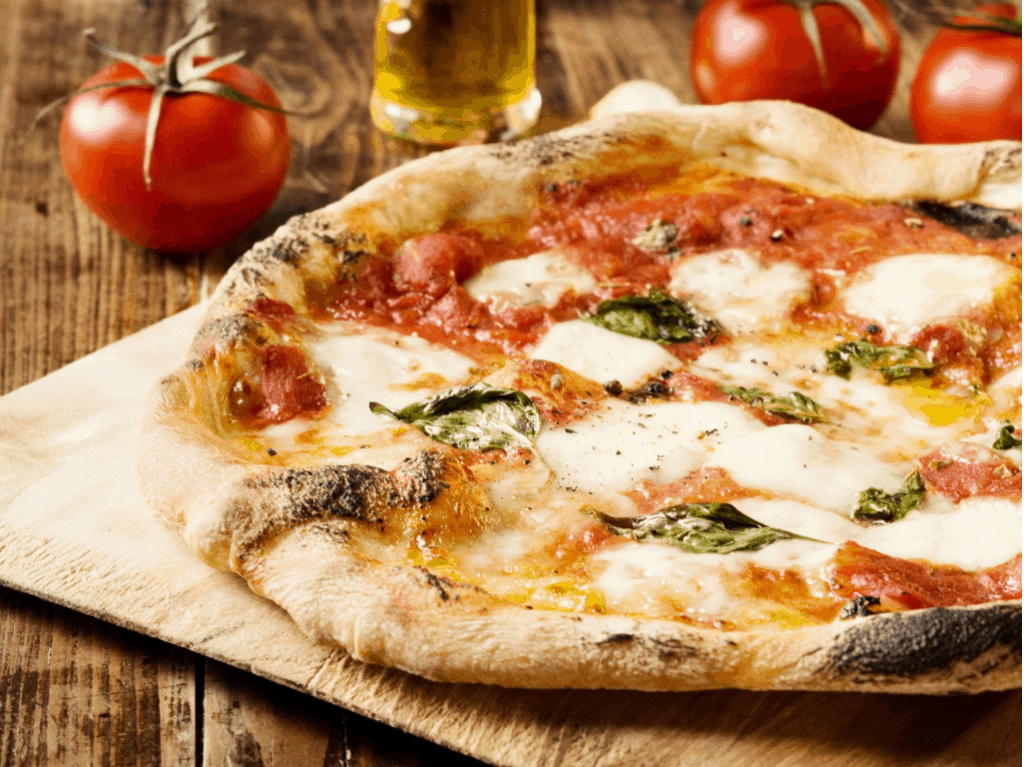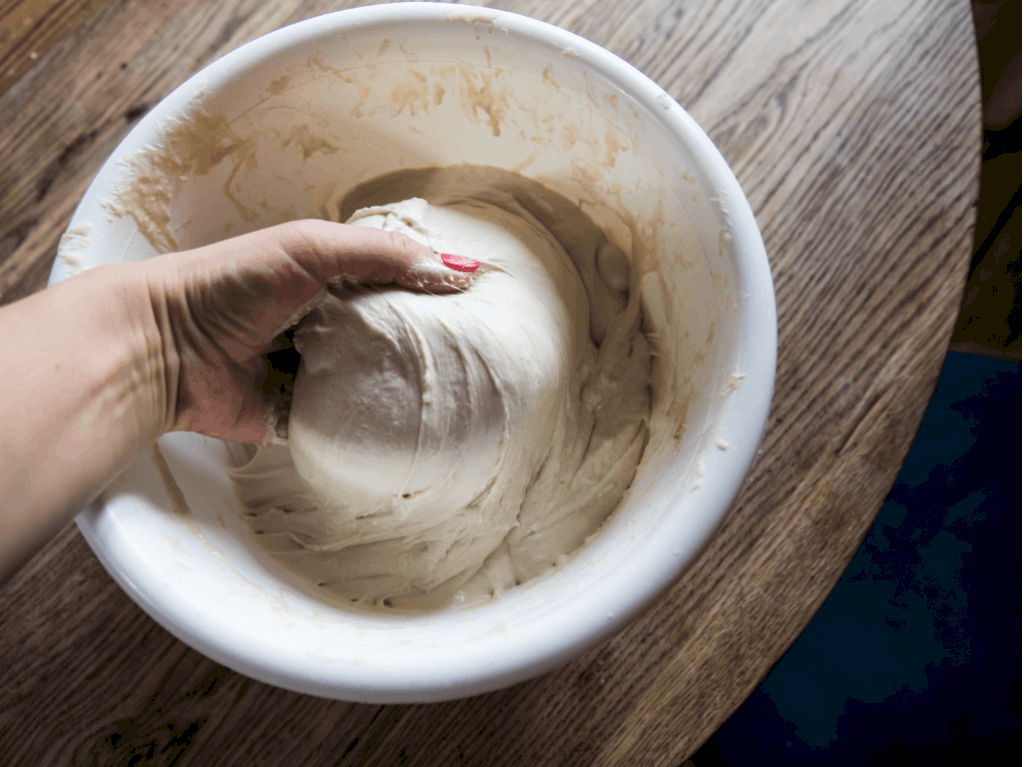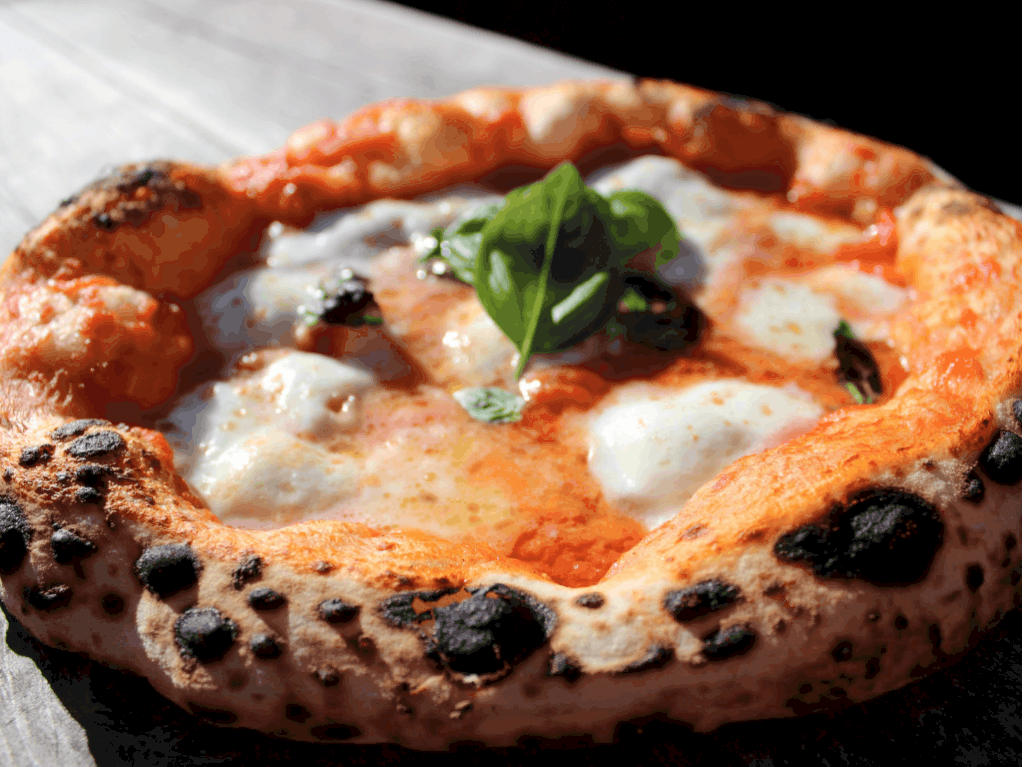Italians are serious about their pizza. In Italy, neapolitan pizza has a denomination of control status given by the Italian Standardization Body. A DOC status means that pizzerias must adhere to strict requirements when making neapolitan pizza.
No, neapolitan pizza does not use sourdough crust. However, note that nowhere in that DOC does it restrict pizzerias from making neapolitans using sourdough bread. While it’s not traditionally included in the recipe, which originally involved wheat flour, it’s designated delicious by everyone who’s tried it.

Especially in the U.S., with the pandemic bringing out a desire in North Americans to make sourdough bread, more and more people are trying to make sourdough neapolitans. They can now combine their love of the art of breadmaking with the art of crafting a brilliant, sourdough neapolitan pizza, and in this post, I’ll tell you how.
How to Make Sourdough Neapolitan Pizza
As with everything sourdough, I’m going to take you back to the very beginning of the process. No, you won’t be making your own starter, you can purchase or have one passed on from generations, but you will need one to begin making your pizza. Personally, I don’t have relatives who started eons ago, so I had to pick up mine from a store.

- Take out all but 100g of the starter, saving the rest for other delights.
- Add 100g of lukewarm water and 100g of flour to the starter.
- Mix together thoroughly.
- Seal firmly and let it sit at room temperature for six to seven hours. It should have tripled or doubled in size by this time.
- Stir again. It’s now ready to be used for the dough.
Make the Dough
Here’s what you’ll need for the final mix:
- 425g of bread flour
- 75g of whole grain flour
- 310g of warm water
- 200g of starter mix
- Olive oil, for the fermentation
- Flour, for dusting the surface

Obviously, you’ll need to make the sourdough starter mix a day before you begin the dough, unless you’re willing to forgo sleep. Mix the final dough mix in and begin kneading. You’re going to want to do this for a good ten minutes.
Alternatively, you can use an automatic machine, but there’s something fundamentally satisfying about doing it yourself. You’ll know you’re done when the dough starts to take a bouncy shape.
Add a little olive oil and cover the dough. This will help fermentation. Let it sit for about three hours to bulk ferment properly. You’ll see small bubbles form on the dough.
Divide up the dough in three or four equal sized pieces, depending on how big you want your pizza. Roll them up into tight balls and dust the surface of your counter with flour, then roll the balls toward you. Keep doing this until they take on a smooth, round shape.
Now it’s time to determine what you want on your neapolitan. Tradition dictates that you should aim for more sauce than cheese, though that’s fallen out of favour in this part of the world. Rather than have a big, sloppy, potentially soggy neapolitan, change up the pace a little.
Requirements Matter

However, it’s important to note that there are official requirements that the pizza must meet in order to be regarded as neapolitan. Everything that doesn’t meet the requirements can’t really justifiably claim to hail from the city of Naples.
The actual booklet of requirements is surprisingly long, but kind of interesting considering it’s just food. But that’s how seriously Italians take their country’s pride. Even olive oil and truffles are a major part of organized crime in Italy.
The reason why sourdough still can be used under these requirements is that you’re still using, as you can see from the recipe, the traditional wheat flour as part of the dough. So it really only technically counts.
There are other factors that make a pizza neapolitan, such as toppings. There are three popular options that are officially sanctioned by Italy. .
Pizza Marinara: This popular style is topped with tomato, garlic, olive oil and oregano. (Find out if you can use marinara sauce to make pizza)
Pizza Margherita: Similar to the marinara, but this style has the benefit of basil rather than oregano and fresh, sliced mozzarella cheese.
Pizza Margherita Extra: Again, similar to the Margherita in every way, though the mozzarella cheese is mozzarella di Bufala.
Of course, you can always add ingredients that aren’t included in those recipes. Just so long as your pizza contains those basic toppings and ingredients, you should be in the realm of that famous pie from Naples.